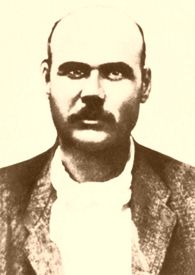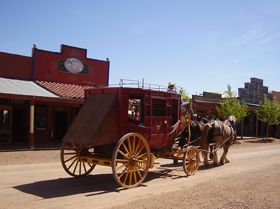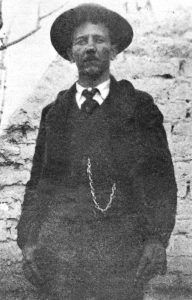Burton Alvord began his career as a respectable lawman but later turned to the more profitable work of an outlaw.
Albert W. Alvord was born to Charles E. Alvord and his wife Lucy on September 11, 1867, in Plumas County, California. The son of a prospector and justice of the peace, he moved several times as a child following the mining business.
When he was 15 years old, he worked as a stable hand at Tombstone’s O.K. Corral, where he witnessed the famous gunfight. Three years later, he was present when vigilantes lynched John Heath, a convicted thief and murderer.
In 1886, at age 20, Alvord was appointed Deputy Sheriff of Cochise County by the newly elected Sheriff, “Texas” John Slaughter. Alvord quickly earned a reputation as an excellent tracker, bringing in several cattle rustlers and other wanted fugitives.
For the next three years, Alvord served with Slaughter in many shoot-outs with outlaws, rustlers, and gunmen. However, Alvord’s sterling reputation as an efficient lawman began to slip in 1889 when he began to drink heavily.
Frequenting the many saloons of Tombstone, Arizona, Alvord started to socialize with some of the criminal elements and was known to get into frequent scuffles. As Slaughter began to chastise his actions, Alvord soured on both the Sheriff and the law.
Alvord moved to Fairbank, Arizona, in the early 1890s and became a town constable. Continuing to drink heavily and cavort with known outlaws, he was soon asked for his resignation, and he moved again to Pearce, Arizona. There, he worked briefly as a deputy marshal for George Bravin in 1896, looking for a “tough nut” to make sure his growing mining camp didn’t get out of hand. However, after just six months, Bravin decided that there was no longer a need for the toughened lawman, and Alvord moved on to Willcox. Little did Bravin know that the two would meet again under far different circumstances.
In Willcox, Alvord first worked as a constable and later became a deputy sheriff. However, he commanded very little respect as, by this time, he had become a severe alcoholic. By the turn of the century, Alvord had given up on being a lawman and joined with the many outlaws he had befriended over the years. Starting with cattle rustling, he formed a gang with Billy Stiles and began committing armed robberies. After a failed attempt to rob a Fairbank train and a run-in with tough lawman Jeff Milton, Alvord was arrested and taken to the Cochise County Jail. By that time, his former boss, George Bravin, was working as a lawman in Tombstone, and the two came face to face again.
On April 7, 1900, as Bravin had some 25 prisoners housed in his jail, Billy Stiles visited Alvord and other gang members in the jail. He then held a gun to Bravin, demanding the release of all the prisoners, and shot the lawman in the foot, taking off two of his toes. The prisoners, including Alvord, then escaped.
The gang continued their criminal ways until Alvord and Stiles were arrested in December 1903. Again, they were incarcerated in the Tombstone Jail, and again, they escaped. A short time later, Alvord got the idea that they would fake their deaths to get the law off their trail. The pair killed two Mexicans, unearthed them from recent graves, and sent them in sealed coffins to Tombstone. Spreading the word that the coffins contained their outlaw bodies, the lawmen were suspicious and opened the coffins. Finding the moldering remains of the Mexicans, rather than the outlaws, they went after them again.
The Arizona Rangers pursued the men into Mexico in February 1904 and trapped them near Naco. When Alvord and Stiles went for their guns, the Rangers returned fire, hitting Alvord twice in the leg and Stiles in the arm. Though Stiles somehow escaped, Alvord was captured and sent to the Arizona Territorial Prison at Yuma, where he served two years for robbery. Released in 1906, he then traveled to Central America. He was last seen in 1910 working as a canal employee in Panama.
©Kathy Alexander/Legends of America, updated June 2025.
Also See:
See Sources.



